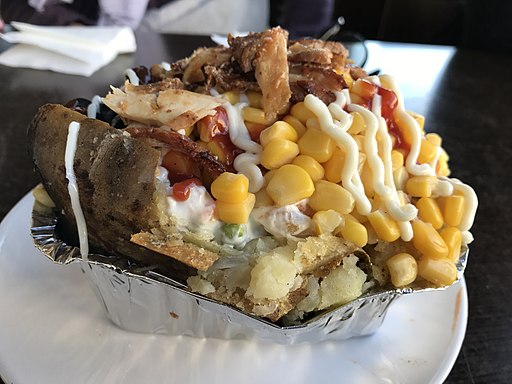Continuing the series on What is your favourite street food? Part 15
Street food Spain
has a few but, since autumn has just ended, let me tell you about the most typical one:
Roasted chestnuts

Image credit- Pixabay
Not that much of a mystery. Spanish people love chesnuts and the best way to eat them is by the street and roasted. What’s charming about this is that they’re sold on stands where you can see the castañero roasting them on a metal furnace. It’s been like that since forever and many cities would not be the same without their chestnut stands set right at the start of the fall.
Hasn’t changed that much for the last century
Oh, and fear not if you don’t like chestnuts. These stands usually also sell sweet potatoes and cobs. Roasted too, of course.
Most Spanish food is awesome, but here’s some tips about it if you’re visiting Spain:
- Good paellas are very, very hard to find. This is a very complex dish and very slow to produce (it takes around 1 hour and a half to cook).

Paellas are the NOT fast food and most paellas that are sold to tourists are cheap-ass frozen paellas. Avoid them unless you have a lot of knowledge about local restaurants.
- Iberian ham is a delicacy, and I would dare to say that Spanish cold cuts are the best of the world.

You can’t go wrong with any of these, really. Museo del Jamón has some great ratio of “ham for your buck” thanks to its staggering economy of scale.
- Spain has an even bigger variety of cheeses than France.

If you can taste some local cheese, don’t think twice but do it!

Image credit- cocinadenihacc.wordpress.com
- Non-frozen croquetas are heaven incarnate.
- Most gourmet markets have good food, but very touristic prices (that is, they are overpriced).
- Commercial Spanish beer quality range from “meh” (Alhambra) to “crap” (Cruzcampo), but artisanal beers are an entirely different (and better) story.
- Spain has some of the best wines in relation of price VS quality, both red and white. Drink them at will!
- We know our seafood and fishes. Spain is, after all, the 2nd biggest market for all things sea, right after Japan. Don’t be afraid of the alien-looking sea creatures in our menus
- Tapas are a great thing, but their quality and quantity greatly varies from one region to another. For example, Granada has a stronger tapas tradition than Madrid, which in turn has a stronger tapas tradition than Barcelona. In some parts of Spain they are even non-existent (The Basque Country has Pintxos instead of tapas, for example). Also, tapas or not, menus del día are the best way to eat (and the cheapest!)
- Spain is a regional differences galore, and thus, its star dishes will greatly vary from one region to another. The more cosmopolitan the place, the better “high end” creative cuisine restaurants. The more rural, the better local produce. But it would really help to know which exact region you will be visiting in order to recommend you its speciality.

Spanish omelette Wikipedia
- Bonus track: Potato omelette is a salvation table for vegetarians visiting Spain, and a hell of a dish.
- Pro tip: Good potato omelettes contain onions, and are creamy on the inside (rather than dry). Accept no substitutes and treacherous claims about potato omelettes without onions, for they are false food prophets.
~ Eduardo Marqués Collado, Lives in Spain
So, what is your favourite streetfood in Spain?





























